How to care for a room violet so that it blooms?
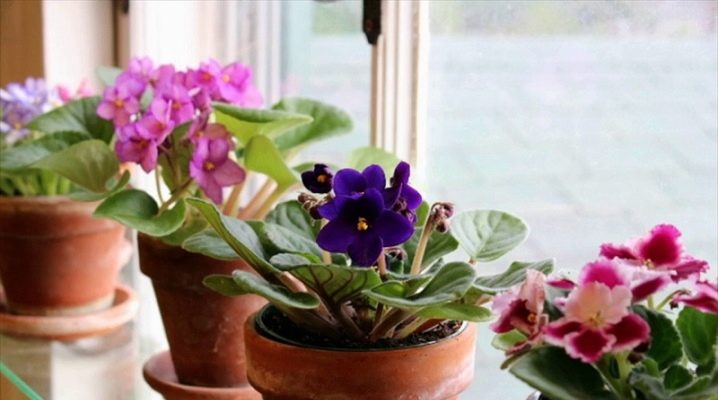
How often in everyday life you can hear that a flower like Saintpaulia is called a violet by many. But if you look at it, the violet is a pansy. For a complete understanding, you need to delve into the history of the origin of this plant, truly beloved by many.
Once upon a time, Africa amazed Europeans with its nature, and one of the most beautiful places was the Usambar mountainous area, in which Baron Walter von Saint-Paul Iller later became the leader. This man was a great boss who loved nature. He often devoted his time to contemplating nature. He noticed an interesting purple flower in the stones. The Baron decided to share his find with people. According to the name of the area, these flowers were given in the name the first word "uzambar", and in honor of the baron, the mountain flower botanists began to call it Saintpaulia.
Today, the variety of colors of the flowers of this plant amaze with their palette: from rich and bright colors to very pale ones. In almost every home, this plant takes a worthy place in the collection. In order for this amazing flower to delight its owner with flowering, it is necessary to create the right conditions for keeping.
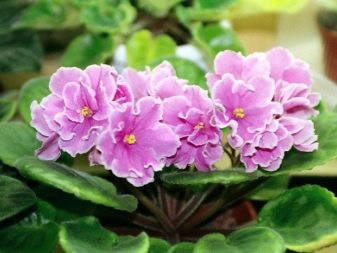
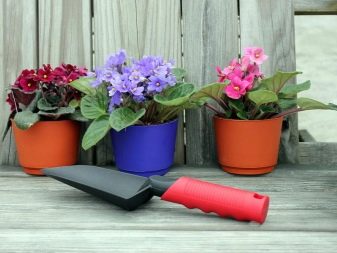
How often do they bloom?
Violets bloom profusely for 9-10 months a year, that is, almost all year round. With proper care, the flower immediately produces inflorescences. Violet buds remain for about 2 months, after which there is a break for the growth of leaves and the appearance of peduncles in the axils of the plant.
If this does not happen, then it is necessary to carefully review the conditions that are created for the plant. Perhaps the flower lacks light, moisture, or the location is incorrect.
Any competent florist knows that if a violet bloom changes imperceptibly, it means that he creates proper care for the plant.
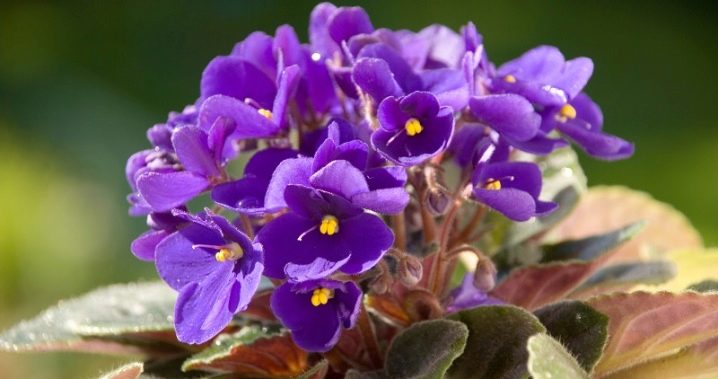
In order for the violet to bloom, you need to pay attention to the following conditions for keeping the plant.
- The violet should receive light within 12 hours.
- It is necessary that the foliage of the plant does not touch the cold window panes.
- The best air temperature for violets is 20-24 C.
- Comfortable humidity is about 50%. Dry air is often at home in winter due to the operation of heating devices; it must be additionally humidified.
- Watering the plant should be done as the soil in the pot dries out.
- The violet should be grown in light and airy soil, which must be replaced every year.
- The size of the violet pot should correspond to its size.
- If the plant is older than three years, then it must be planted. This will promote the formation of peduncles.


Causes of problems
If a violet refuses to bloom, but gives only foliage, then the conditions for its maintenance and care are far from optimal. Do not forget about the possible presence of diseases and pests.
The main reasons for the lack of inflorescences:
- falling sun rays on the plant;
- touching the warm air of heating room appliances;
- it is allowed to get moisture on the foliage when spraying other indoor plants or cleansing the foliage;
- drafts;
- the soil in the flower pot is poorly moistened or waterlogged;
- cold and hard water is used for irrigation.
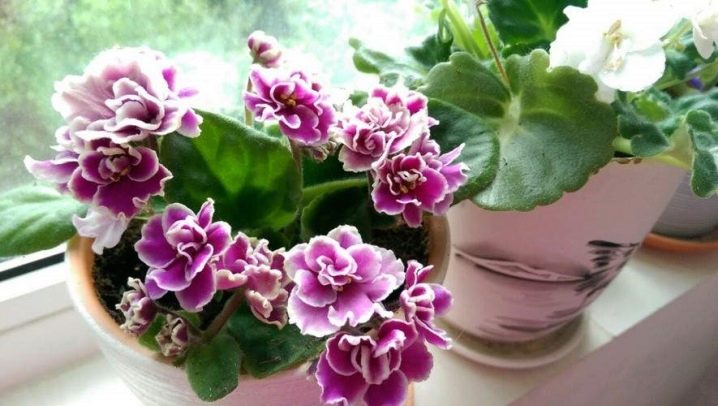
Violets naturally grow in rock crevices, which explains the plant's need for small pots. The root system does not exceed the size of one leaf.In the case of planting a plant in a large pot, the inflorescences can not wait at all.
Only leaves will actively grow, and all the free space in the ground will be conquered by the roots. It is advisable to choose a plastic pot for violets to maintain air circulation.


Lighting
For intensive growth and formation of inflorescences, the lighting of the plant must be sufficient. Violets grow well in sufficient light. It must be remembered that the birthplace of violets is a tropical climate, where there is little sunlight and diffused light prevails. It is better to place a pot with a plant near windows that do not face the south side. In the summer, you need to do protection from the bright sun, since at this time of the year the plants require shade.
With a decrease in the length of daylight hours, there may be a need for additional lighting. In this case, it is better not to use incandescent lamps in order to avoid overheating the plants or burning the leaves. It is much more convenient and most effective to use for additional illumination of fluorescent lamps. Lighting must be on for 13 hours a day.
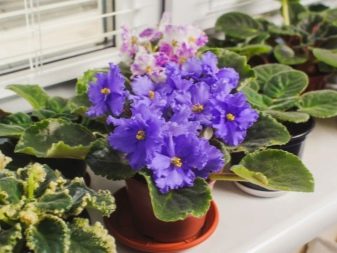
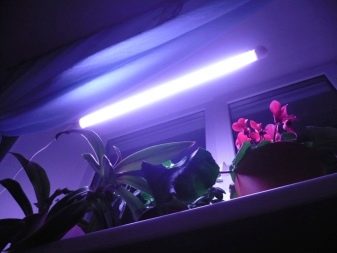
Humidity
Violet is a very moisture-loving plant. In nature, it grows mainly near water bodies. Humidity at home, especially in winter, is usually about 25-30%, which is extremely low for such a plant. Dry air is the enemy of violet bloom.
In winter, the plant experiences discomfort due to the operation of heating devices. It is necessary to correctly adjust the conditions for keeping violets at the onset of winter. The best option is to use a humidifier in a room with plants. Today, a variety of technology allows the use of humidifiers without heating the contents, which helps to reduce the air temperature in the room.
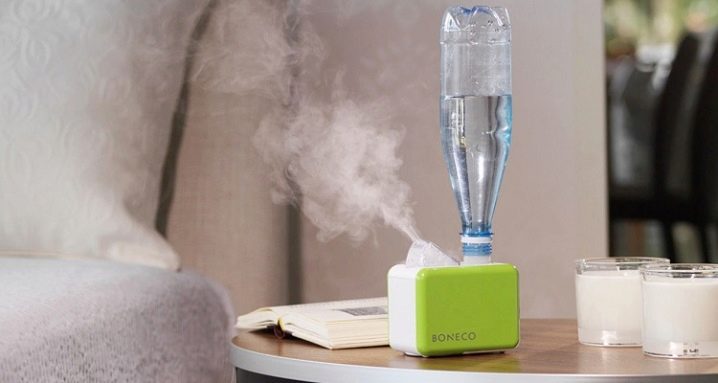
You can approach the solution to the problem of dry air less radically. It is necessary to spray the space around the violets more often using a sprayer with fine holes or place containers with water between the plants. The wider the container, the more efficiently the water will evaporate.
Keeping the air humidity at a constant level is not so difficult. If the pallets for flowers are placed on a special rack, expanded clay or moss is tightly laid on the bottom of the pallets, and the flower pots are placed on such a bed, then there is no need for frequent watering and additional humidification of the air.
But it is worth making sure that the expanded clay is simply wet, and that water does not accumulate at the bottom of the pallets.

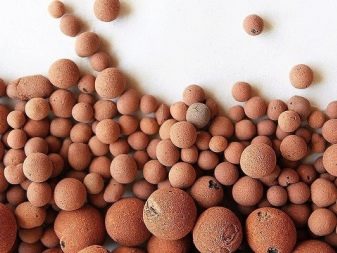
Temperature
Violets love heat, but cannot stand heat. It is necessary to make the temperature for the growth and flowering of violets - + 20-25 C. If the temperature exceeds the specified limit, then the loss of buds is possible. In winter, the temperature should not fall below 15 C.
Violets are afraid of drafts and very warm air. The creation of special structures made of fiberboard or plexiglass helps to solve this problem. They must be placed along the window and perpendicular to the window sills. Thus, plants are protected from cold air from windows and overheating from heating radiators.
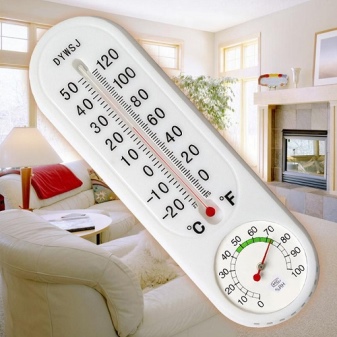
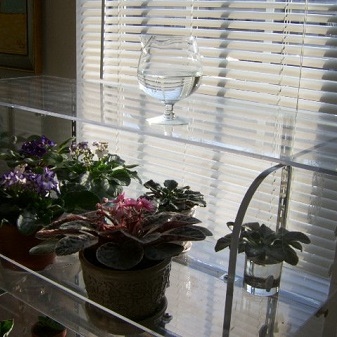
The soil
There are basic requirements for the soil in which the violet grows:
- breathability and lightness;
- fertility (the soil must contain a sufficient amount of phosphorus, potassium and nitrogen);
- pH level 5.5–6.5;
- healthy microflora;
- no pests.
Correctly use universal soil with the addition of river sand, charcoal, superphosphate, finely chopped moss. For the plant to take root well, it is advisable to use more baking powder. An excellent soil option for violets would be soil from under last year's leaves near the roots of lindens or birches, nettles, or from areas where strawberries bear fruit well. It is necessary to harvest the land in the spring, when the soil has not warmed up.
To destroy the spores of parasites, the soil must be steamed in the microwave by placing the soil in a bag.
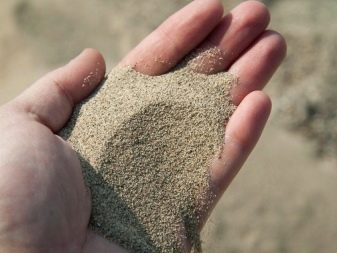

Watering
You can water the flowers with ordinary tap water, purified or settled for a day. The main indicator of correct watering is the external state of the violet. The easiest way to navigate is by the state of the foliage. It must be elastic and of the correct color.
In case of strong drying of the plant, in order to restore it, the pot must be placed in water for an hour, then closed with a bag and put in a place with dim lighting. At home, the plant will recover in a couple of days. With abundant watering, the lower leaves of the flower drop, and the roots can rot. It is necessary to remove it from the pot and examine the root system. Gently cut off the dead roots and place the plant in a weak solution of potassium permanganate for about an hour. Next, transplant into a small pot with loose soil.
The frequency of watering is determined by the conditions of detention. Watering is practiced in a tray, directly into a pot or by a wick method. To prevent violets from withering, when watering through a tray it is useful to regularly spill flowers with potassium permanganate in order to flush out harmful salts. When watering in the place where the flower grows, you must be careful not to erode the soil and avoid moisture getting on the leaves. For this purpose, special watering cans are suitable. After some time, excess water can be drained from the sump.
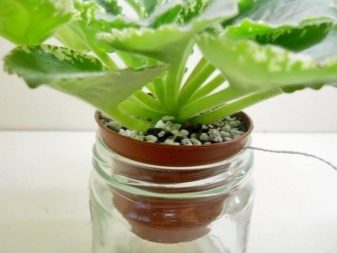

With a large number of plants, it is convenient to conduct a wick spill through a cord threaded into the bottom of the pots. The wicks are lowered into a container with a grate, where water is periodically poured.
Watering violets require soft water. It is useful to spill flowers once a month with an acidified solution. It will not be difficult to make it. You will need apple cider vinegar or citric acid. Add half a teaspoon of vinegar or 6 acid crystals per liter of water. Acidified water is an excellent remedy for the prevention of certain diseases. It allows you to fight against fungi - saprophytes, which appear on the surface of the earth in pots.
The frequency of watering flowers depends on the temperature regime. In conditions of high air temperature and bright lighting, it is recommended to water daily. In the autumn, before turning on the heating devices, you can water the violet every three to four days to avoid the formation of rot.
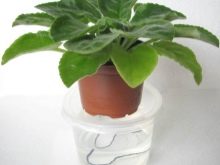


Pests and diseases
Plants, like all living organisms, can be attacked by pathogens and become targets for parasites. You can reduce the likelihood of disease by following the rules:
- it is important not to put purchased flowers next to the entire collection of violets for a month;
- for prevention purposes, the buds should be removed;
- to change the climate from humid to dry, in order to avoid death, the plants should be taught gradually;
- when handling a painful plant, carefully treat your hands.
The most common diseases of violets are leaf rot and yellow spot. Decay is a consequence of abundant watering, root diseases or pest damage. Rotting microorganisms penetrate. In this case it is necessary to cut off the lower part of the violet along with the root. In strong light or moisture on the foliage, mottling occurs. Fungi, viruses or bacteria are the causes of violet diseases.



If the leaves are covered with a coating that looks like flour, powdery mildew has occurred. Spores of this fungus are habitual inhabitants of the soil. To avoid contamination of the entire collection, the plant must be isolated and processed.
With prolonged lethargy of the plant, it can be assumed that it is affected by late blight. It is urgent to cut off the top of the head and lower the roots into the water. Fusarium is a common fungal disease. At the beginning of this disease, the roots rot, then the stem is affected, the leaves and the plant becomes unviable. It is necessary to destroy the plant and process the pots.
There are a lot of pests affecting violets. The main enemy of the violet is the nematode. Damaging the roots, it sucks out all the juices from the plant cells. It will not be possible to visually identify the nematode, since these are worms that can only be seen under a microscope. When the roots swell, it is better to throw out the flower together with the earth.
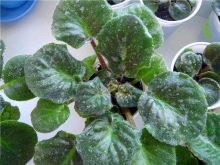


If the leaves become brittle, the plant wilts and stops growing, with a high probability it is affected by ticks. For the destruction of these parasites use "Fitoferm".
The terrible enemy of violets is thrips. It reproduces by eggs and is capable of producing offspring quickly. The main manifestation of this parasite is the appearance of whitish stripes on the buds. To stop these pests from multiplying, it is necessary to tear off all peduncles and spray the plant with a special chemical solution.
Any florist has met with small flies (sciarids). These parasites appear with abundant watering. In a small amount, they do not cause serious harm. Such gnats feed on rotting remains. With abundant reproduction, sciarids feed on plant tissues. To destroy these parasites, it is necessary to shed the soil with the preparation and dry it.



How to speed up flowering?
In order for the violet to bloom, it is necessary to properly care for the plant and create an optimal maintenance regime. Feeding a plant can stimulate flowering, but it is not a panacea.
It is important to remember the basic rules for making the plant bloom and achieve lush flowering with a hat.
- Keep your mail fresh. In this case, such care as plant transplantation, like nothing else, gives excellent results. Every year in the autumn, the soil of the plants must be renewed with cutting and removing the leaves, rooting the top. For the best result, the transplant can be carried out up to four times a year, which will definitely make the violet bloom.
- In the case of frequent transplanting, plant feeding is not required. When transplanting once a year, it is necessary to feed the plants after 2 months with any complex fertilizer. When oversaturated, the plant will produce many leaves.
- Sufficient light for at least 12 hours. Artificial lighting has a good effect.
- Maintaining the temperature regime.
- 3 months after transplanting, the buds should be trimmed and excess leaves removed. In this case, you will definitely be able to achieve the nodding flowering of the plant.
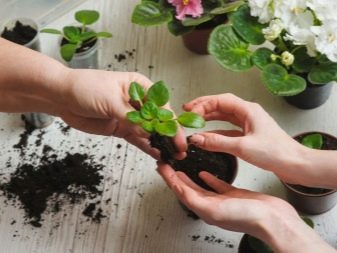
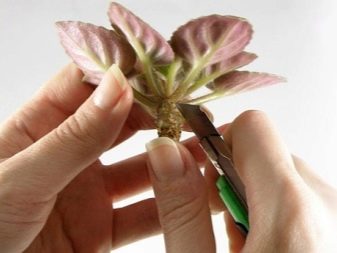
It is important to remember that the duration and type of flowering are in direct proportion to the air temperature.
It's no secret for florists that buds of any flowers will open the faster, the higher the air temperature in the room. But the result from such a quick disclosure will not be pleasing to the eye. Flowering will be very sparse and fast.
In order to ensure long-term flowering of violets with a hat, flowers with grown peduncles are placed in a relatively cool room. In this case, the buds will be large and bright. In addition, the freshness of the plant will be preserved. By following these simple rules, you can achieve excellent results.
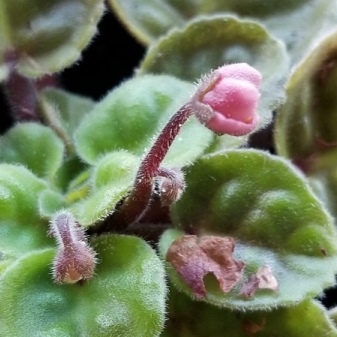

For information on how to care for a room violet so that it blooms, see the next video.































The comment was sent successfully.